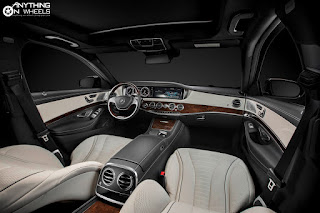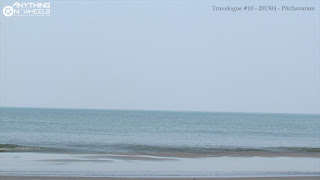Mercedes-Benz is on a royal roll of late. After years of playing catch-up to BMW and losing out to Audi earlier this year in the booming Indian luxury car market, the brand with the three pointed star seems to be back with a bang. Currently in the midst of a new model launching spree that started with the new GL-Class earlier this month, the German luxury car-maker launched the all-new A-Class in the India today. After the B-Class sports tourer that was launched in 2012, the A-Class is the second model from the company's now-famous, front-wheel-drive Modular Front Architecture (MFA) platform.
Available at an introductory price of INR 21.93 Lakhs for the A 180 CDI diesel variant and INR 22.73 Lakhs for the A 180 Sport petrol variant, the A-Class is the most affordable Mercedes-Benz, not just in India but elsewhere as well. Don't let the '180' badging fool you though. While the diesel variant is powered by a 2.2-liter 4-cylinder engine that produces 107 bhp of maximum power and 250 Nm of peak torque, the petrol variant carries a 1.6-liter engine that's good for 121 bhp and 200 Nm of power and torque respectively. Given the popularity of automatic transmissions in luxury cars, both the A-Class variants are mated to a 7-speed dual-clutch automatic transmission.
Available at an introductory price of INR 21.93 Lakhs for the A 180 CDI diesel variant and INR 22.73 Lakhs for the A 180 Sport petrol variant, the A-Class is the most affordable Mercedes-Benz, not just in India but elsewhere as well. Don't let the '180' badging fool you though. While the diesel variant is powered by a 2.2-liter 4-cylinder engine that produces 107 bhp of maximum power and 250 Nm of peak torque, the petrol variant carries a 1.6-liter engine that's good for 121 bhp and 200 Nm of power and torque respectively. Given the popularity of automatic transmissions in luxury cars, both the A-Class variants are mated to a 7-speed dual-clutch automatic transmission.
What strikes us most about the A-Class is its eye-catching design. The front end especially, with those Bi-Xenon headlights, the huge three-pointed star logo and the studded radiator grille with 302 diamond-like pins in it, is a stunner. As with all new Mercedes-Benz models, the profile is an interplay of two sharp character lines that lend the car an aggressive look. It is here that the resemblance with B-Class is clearly obvious. The rear is relatively modest, but still attractive nonetheless. Ever since its global launch, this third-generation A-Class has become a huge success, giving Mercedes-Benz never-seen-before volumes. Undoubtedly, the car's styling has played a big role in it. Its not surprising then that the A-Class has managed to win a host of awards just for its design and styling.
The interiors are similar to the B-Class too, which means the SLS AMG-inspired air-conditioner vents and the sporty, console-mounted infotainment controller with a 14.7-cm colour display are the major attention grabbers. It could be classified a premium hatchback, but that hasn't stopped Mercedes-Benz from loading the A-Class to the gills. Apart from all the regular creature comforts, the A-Class also comes with cruise control, ECO start/stop function, electric parking brake, Antilock Braking System (ABS) with Brake Assist (BA), Attention Assist, Hill Start Assist, Electronic Stability Program (ESP), Acceleration Skid Control (ASR) and a full complement of seven Airbags including a Knee Airbag for the driver. That it comes with segment-defying passenger and boot space for hatchbacks is an added bonus.
It is clear that, with the A-Class, Mercedes-Benz is targeting the young and affluent Indians. As part of it, the company has devised a Total Cost of Ownership for the New Generation Cars (NGC segment) with unique products like Star Ease and Star Care. In addition to the A-Class, the upcoming CLA four-door coupe and GLA crossover are also likely to be part of this.
Speaking on the occasion, Mr. Eberhard Kern, Managing Director & CEO, Mercedes-Benz India commented, “With the new A-Class, Mercedes-Benz now pioneers the Compact Luxury segment in India which reflects the changing customer trend of compact being equated to cool and trendy. The A-Class embodies the changing preference of the youth in today’s social milieu who increasingly prefer compact luxury. The A-Class is also one of the safest cars with 11 drive assistance systems; and is India’s most fuel efficient luxury car with 1000 kms run in a full tank of diesel, having a Cd (Co-efficient of Drag) of 0.27. The A-Class boasts of endless equipment options including a world-class in-car infotainment system. We are confident that the dynamic design and class leading performance is sure to make the A-Class the choice of the new generation.”
Looking at the car, we don't doubt Mr. Kern's claims at all. But, will the Indian public give the A-Class a thumbs up? Will this baby Benz shake up the traditional Indian mindset that fails to associate hatchbacks with anything more than 8 Lakh Rupees? Will Mercedes-Benz get a head-start in the compact luxury segment against BMW and Audi? A whole lot of questions remain to be answered.







+1.jpg)











































